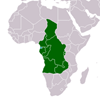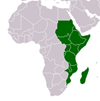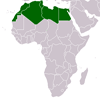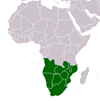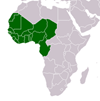The State of Food and Agriculture
The State of Food and Agriculture
The debate over the role of trade in economic growth and poverty reduction has a long history. This often contentious debate dates back more than 50 years at FAO and lies at the very roots of economics. Advocates of freer trade argue that trade promotes growth and that growth reduces poverty. This view maintains that trade barriers such as import tariffs and subsidies generally benefit a powerful, protected few at the expense of the many. Reducing trade barriers promotes more efficient resource use. Grater efficiency means that societies can produce more of the things people want, within their limited resources, raising overall social welfare. The poor are able to improve their levels of nutrition, health and education, creating a virtuous circle of rising productivity and poverty reduction. Critics of freer trade argue that this “neoclassical” model is flawed and that it fails to account adequately for market imperfections and for inequitable power relations that govern the multilateral trade negotiation process. Trade liberalization damages food security, they argue, because liberalization benefits only the larger and more export-oriented farmers, leads to scale incentives and size concentration, marginalize small farmers and creates unemployment and poverty. Critics also maintain that trade liberalization holds no guarantee that everyone will benefit, even in the long run, arguing that in reality it is the poorest and vulnerable members of society who suffer most from the market disruptions arising from the reform process. They claim, moreover, that agricultural imports from developed countries undermine the economic and social fabric of poor rural areas, stalling the traditional engine of growth in agrarian societies. Their fear is that the more the developing countries open their borders, the more they expose poor food consumers to price shocks and small food producers to risks and disincentives. Pointing to the existing international trading system for agriculture, many criticize the import barriers, export subsidies and domestic support retained by some industrial countries in spite of recent progress under the World Trade Organization (WTO) Agreement on Agriculture. They question how farmers in developing countries can compete when their governments had already agreed to trade and agricultural policy changes promoted by the World Bank and the International Monetary Fund (IMF) under structural adjustment programmes. Advocates of agricultural trade liberalization argue, on the other hand, that this view is too pessimistic and one-sided, and that the adjustments associated with policy reform are temporary and the efficiency gains from trade outweigh these transitory costs. They claim that trade barriers are a costly and ineffective way of supporting food security and agricultural development in poor countries. Rather, productivity-enhancing investments in market institutions, infrastructure, technology and human capital represent a better strategy for pro-poor growth.
CITATION: Food and Agricultural Organization (FAO). The State of Food and Agriculture . Rome : FAO , 2005. - Available at: https://library.au.int/frstate-food-and-agriculture-10

